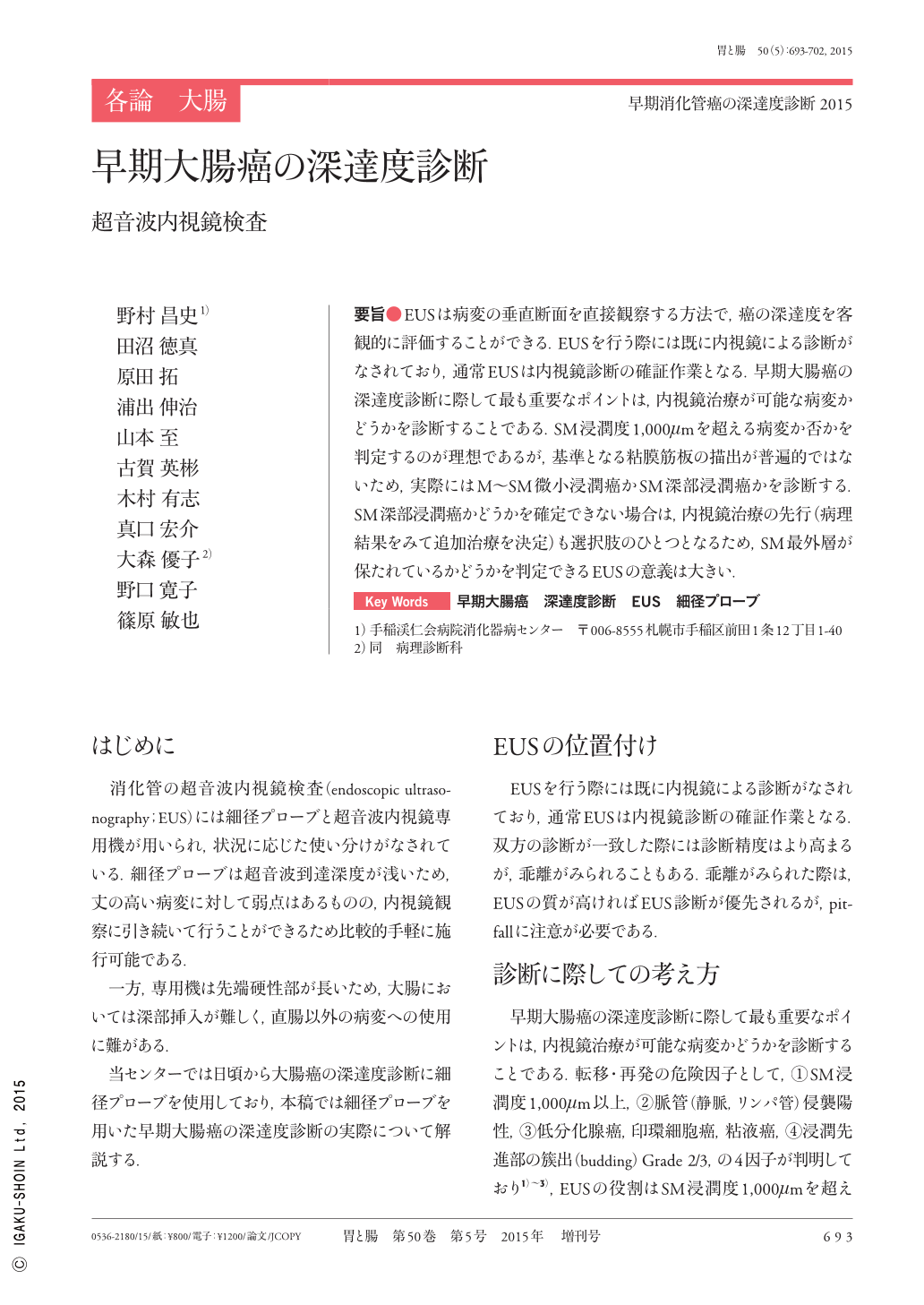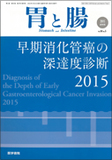Japanese
English
- 有料閲覧
- Abstract 文献概要
- 1ページ目 Look Inside
- 参考文献 Reference
- サイト内被引用 Cited by
要旨●EUSは病変の垂直断面を直接観察する方法で,癌の深達度を客観的に評価することができる.EUSを行う際には既に内視鏡による診断がなされており,通常EUSは内視鏡診断の確証作業となる.早期大腸癌の深達度診断に際して最も重要なポイントは,内視鏡治療が可能な病変かどうかを診断することである.SM浸潤度1,000μmを超える病変か否かを判定するのが理想であるが,基準となる粘膜筋板の描出が普遍的ではないため,実際にはM〜SM微小浸潤癌かSM深部浸潤癌かを診断する.SM深部浸潤癌かどうかを確定できない場合は,内視鏡治療の先行(病理結果をみて追加治療を決定)も選択肢のひとつとなるため,SM最外層が保たれているかどうかを判定できるEUSの意義は大きい.
EUS(Endoscopic ultrasonography)is a method used to directly observe lesions in vertical cross sections, allowing for an objective evaluation of the depth of cancer invasion. Each lesion evaluated by EUS has already been diagnosed by colonoscopy ; thus, EUS usually serves to corroborate such diagnoses. The most important task when diagnosing the depth of invasion of early-stage colorectal cancer is to determine whether the lesion can be endoscopically resected. Although determining whether the lesion has a submucosal invasion depth exceeding 1,000μm would be ideal, visualization of the muscularis mucosae(which serves as a reference to distinguish between the mucosa and the submucosa)is often not possible. Therefore, lesions are diagnosed either as cancer confined to the mucosa or slightly invading into the submucosa, or as cancer with massive invasion into the submucosa. If it is not possible to determine whether the cancerous lesion is massively invading into the submucosa, endoscopic resection is performed and additional treatment is decided based on the pathological results. The EUS findings are significant because they can determine whether the outer surface of the submucosa can be preserved.

Copyright © 2015, Igaku-Shoin Ltd. All rights reserved.


